
《Kuya Kamito Statue》 Kamakura period, 13th century Kyoto, Rokuharamitsuji warehouse
Kuya was one of the first to spread the Amida faith to the people in the middle of the Heian period.
The statue of a superior who is handed down to Rokuharamitsuji Temple, which was built by Kuya, and the statue of the four heavenly kings built under him.
A special exhibition "Sora and other superiors and Rokuharamitsuji" , where famous treasures of Kamakura sculpture gather , has opened at the Tokyo National Museum.
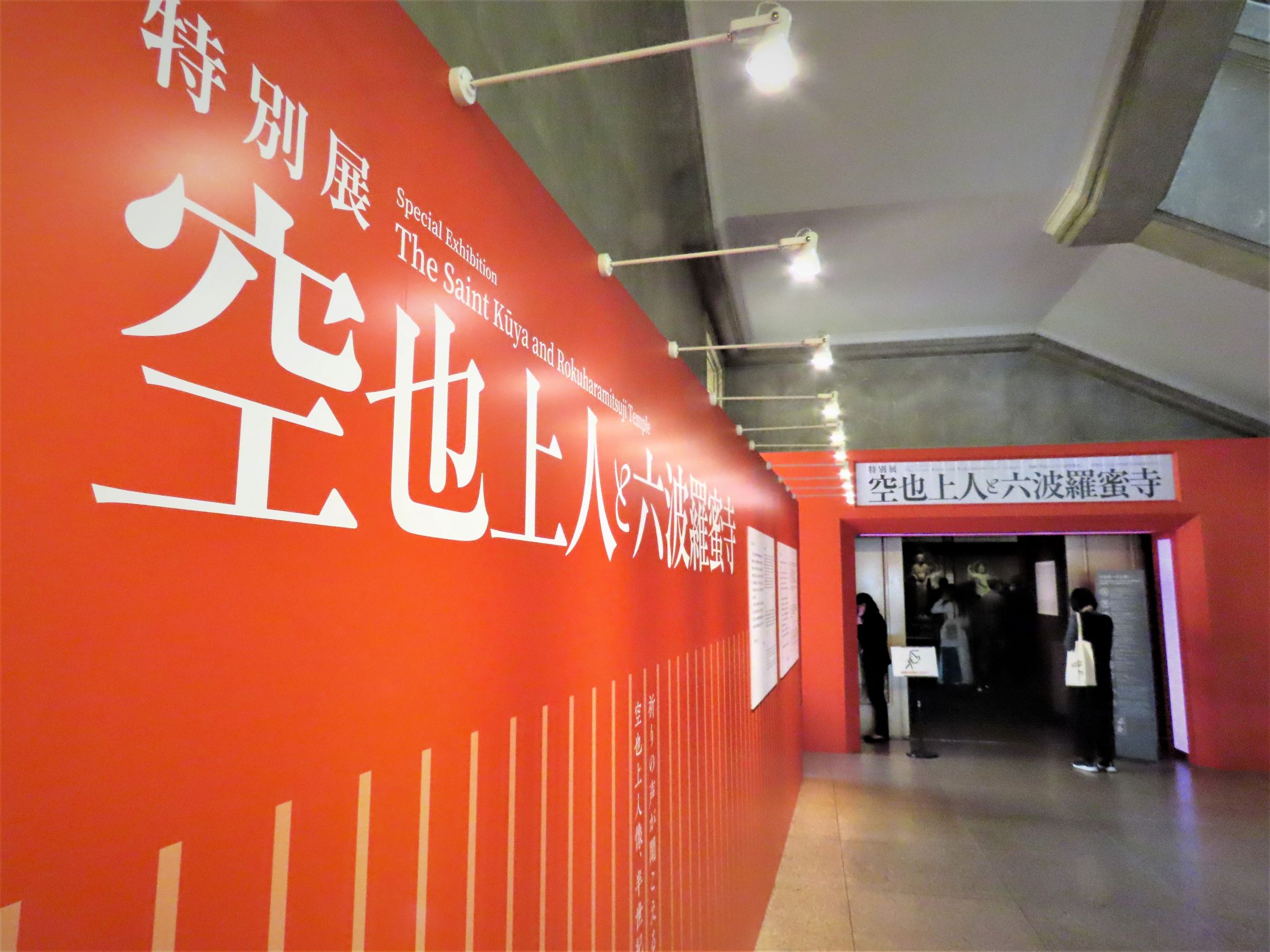
Venue entrance
At the Tokyo National Museum, a special exhibition "Kuya Jonin and Rokuharamitsuji" is being held, focusing on the famous treasures of Kuya Shonin and Rokuharamitsuji.
As you know, Kuya Shonin is a monk who spread the Amida belief that if you sing Namu Amida Buddha, the paradise Pure Land will come true.
The time when this Kuya superior lived was in the middle of the Heian period. This era was also a time when society was hit by great turmoil, such as the loosening of the Ritsuryo system itself and the resulting turmoil in Johei and Tengyo.
Many people were sick due to the pandemic that spread to the capital of Kyoto in the 5th year of the Tenryaku era (951). He showed the way of salvation.
And time has passed, and this year marks the 150th anniversary of the death of the sky and others. Curiously, the world is in the midst of an unprecedented pandemic called the Corona Sorrow.
I'm not the only one who feels the sign of a mysterious era and the timing of this exhibition.
In this exhibition, the statue of Kuya Kamito was exhibited in Tokyo for the first time in half a century, and the statues of the four heavenly kings produced under Kuya Kamito, the Jizo Bodhisattva statue by Jocho, and Unkei's work. Masterpieces of sculptures from Heian to Kamakura, such as the sitting statue of Jizo Bodhisattva, are gathered together.

Venue scenery
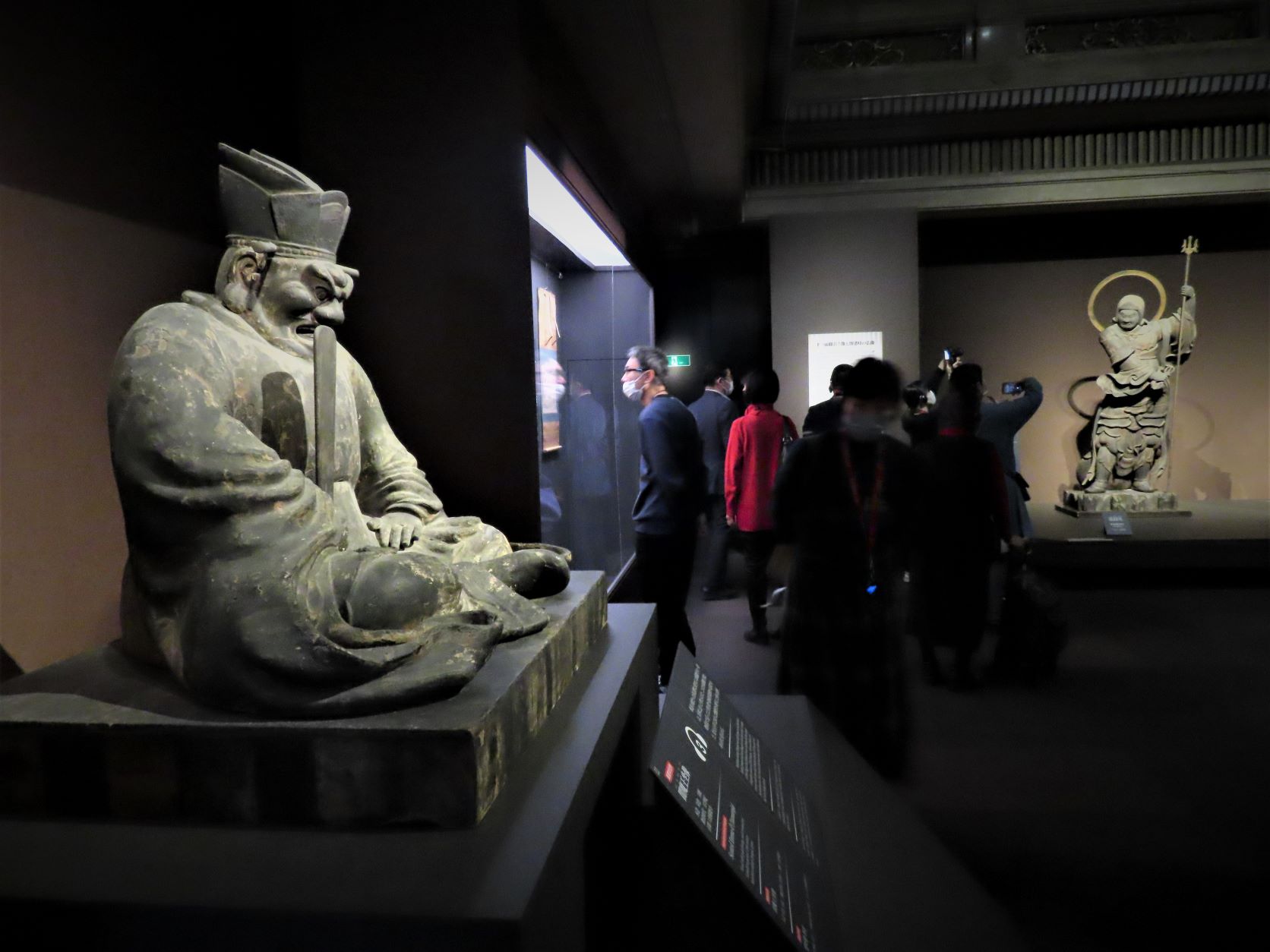
From the exhibition scenery. In the foreground is the "Enmaou sitting statue" (Kamakura period, 13th century)
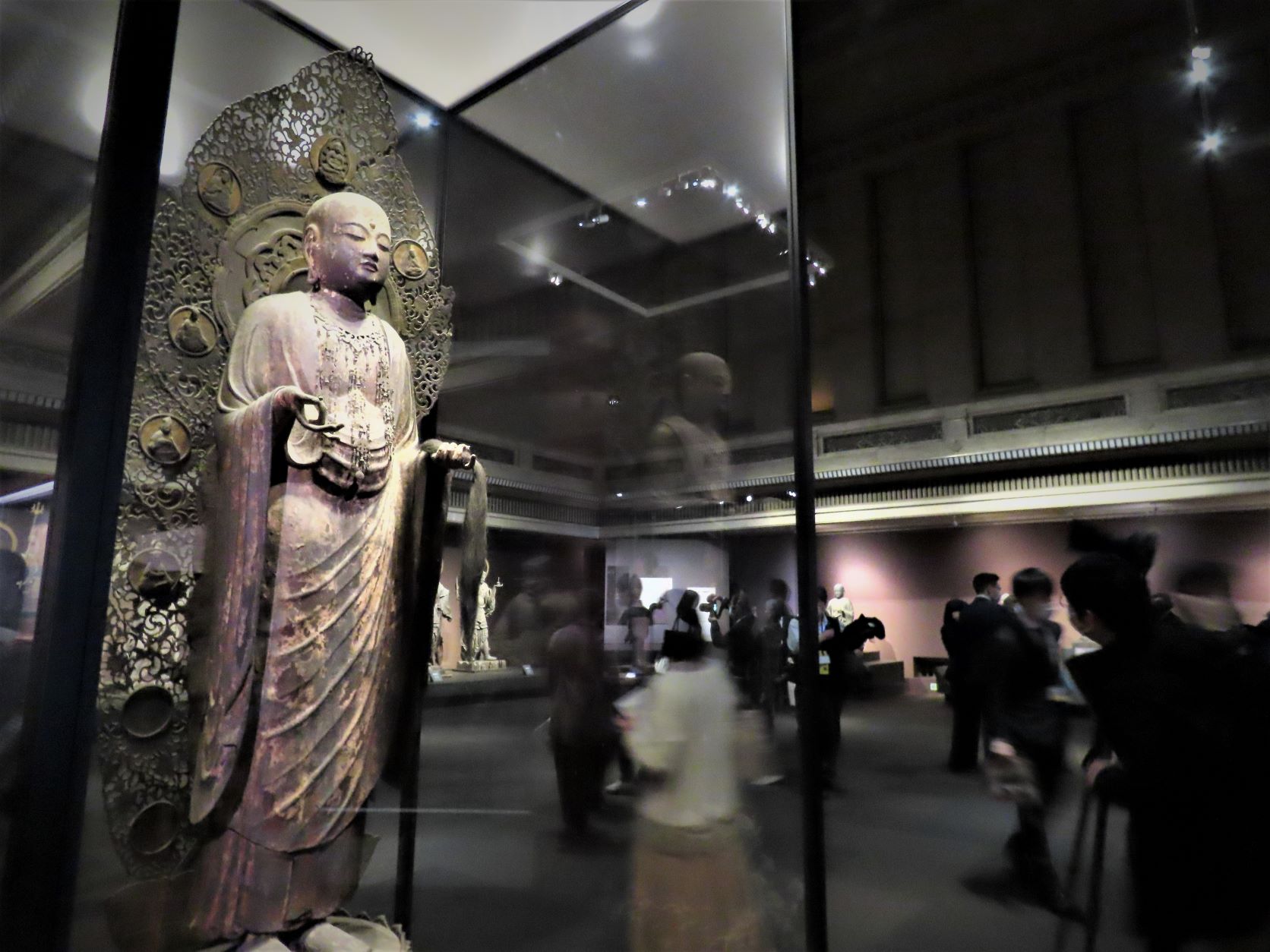
"Jizo Bodhisattva statue" (Heian period, 11th century)
The exhibition venue is 5 special rooms in the main building of the Tokyo National Museum. Since it is an exhibition space with only one room, the site area is not so large, but the space where masterpiece sculptures from the Kamakura period gather is just a masterpiece. In addition, depending on the exhibited works, including Kuya Kamito, the statue can be viewed from 360 ° in all directions, so there are many things to see.
In particular, you can take a closer look at the halo part (a visual expression of the light emitted from the gods and Buddha), which you rarely see on a daily basis, so please try to find your own "pushing angle".
When you step into the venue, the Jizo Bodhisattva statue , which sits in front of you, is a masterpiece of Heian sculpture with graceful coloring, and the well-balanced body balance and the three-dimensional composition of the gentle curved surface shine. The clothes are decorated with pretty chrysanthemum flowers, which makes you feel the skill of the Great Buddha Jocho.
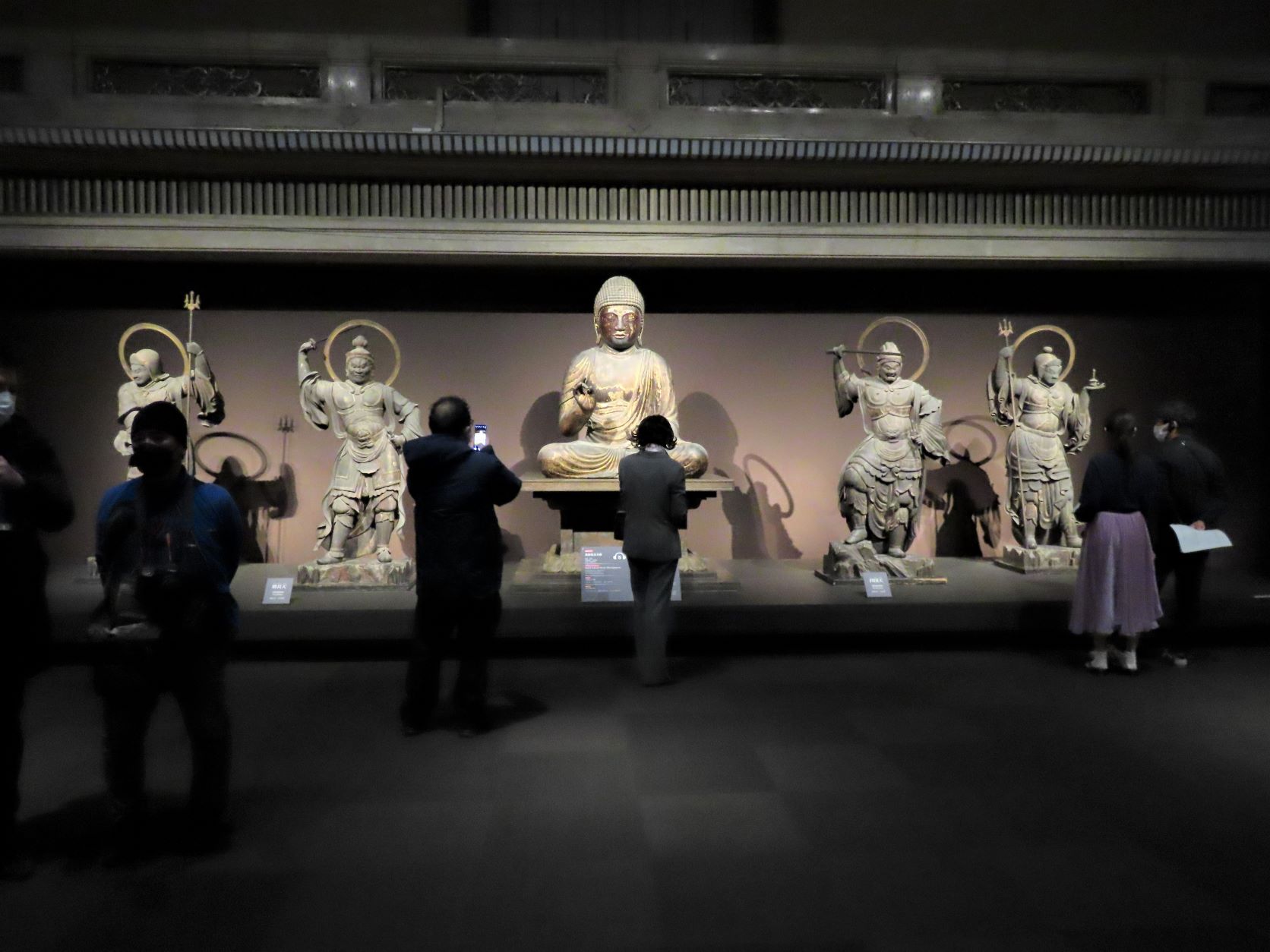
With the sitting statue of Yakushi Nyorai, an important cultural property, in the center, the statues of the four heavenly kings are lined up.
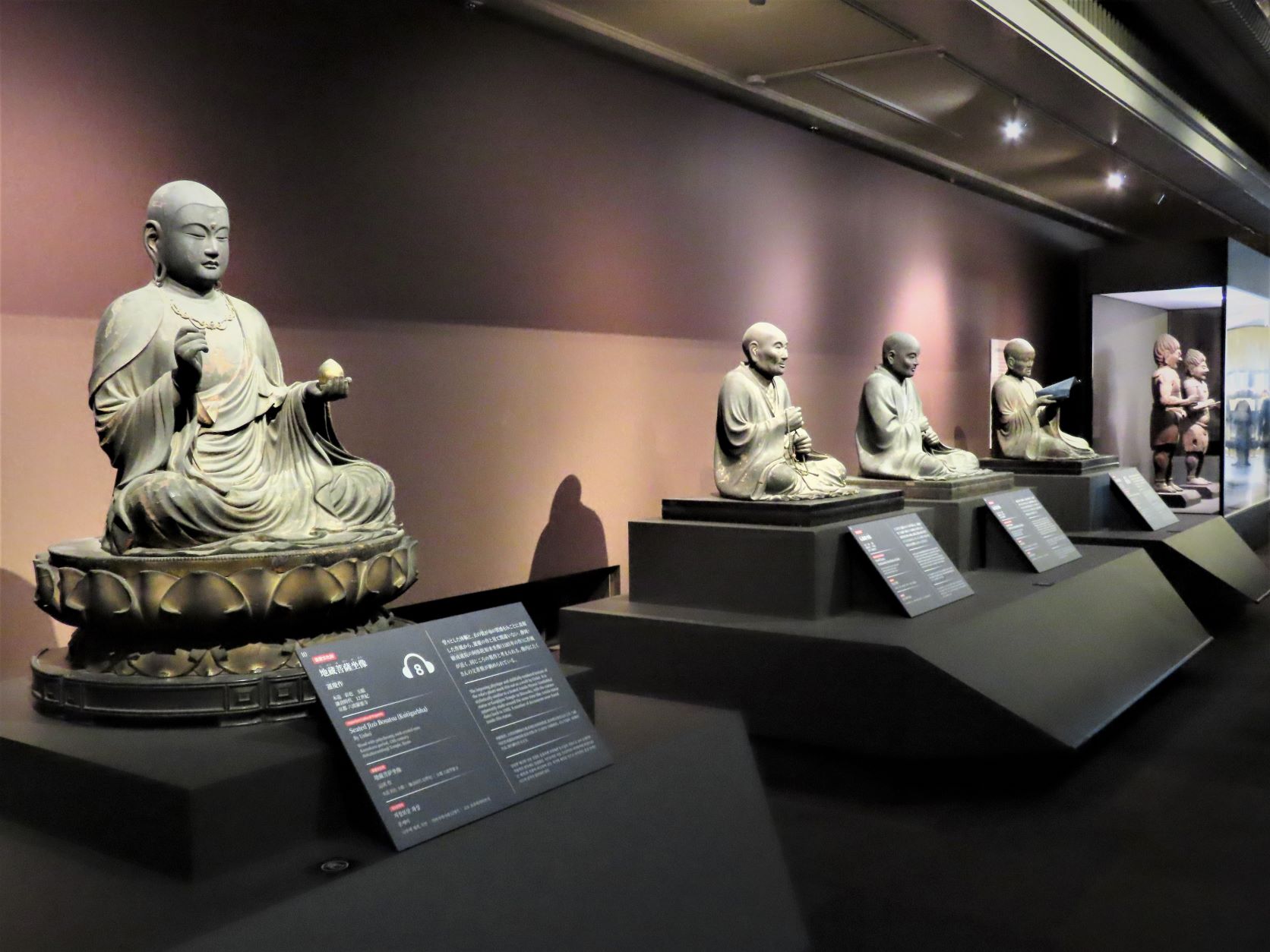
Overcoming repeated hardships, the treasure of Rokuharamitsuji that is handed down
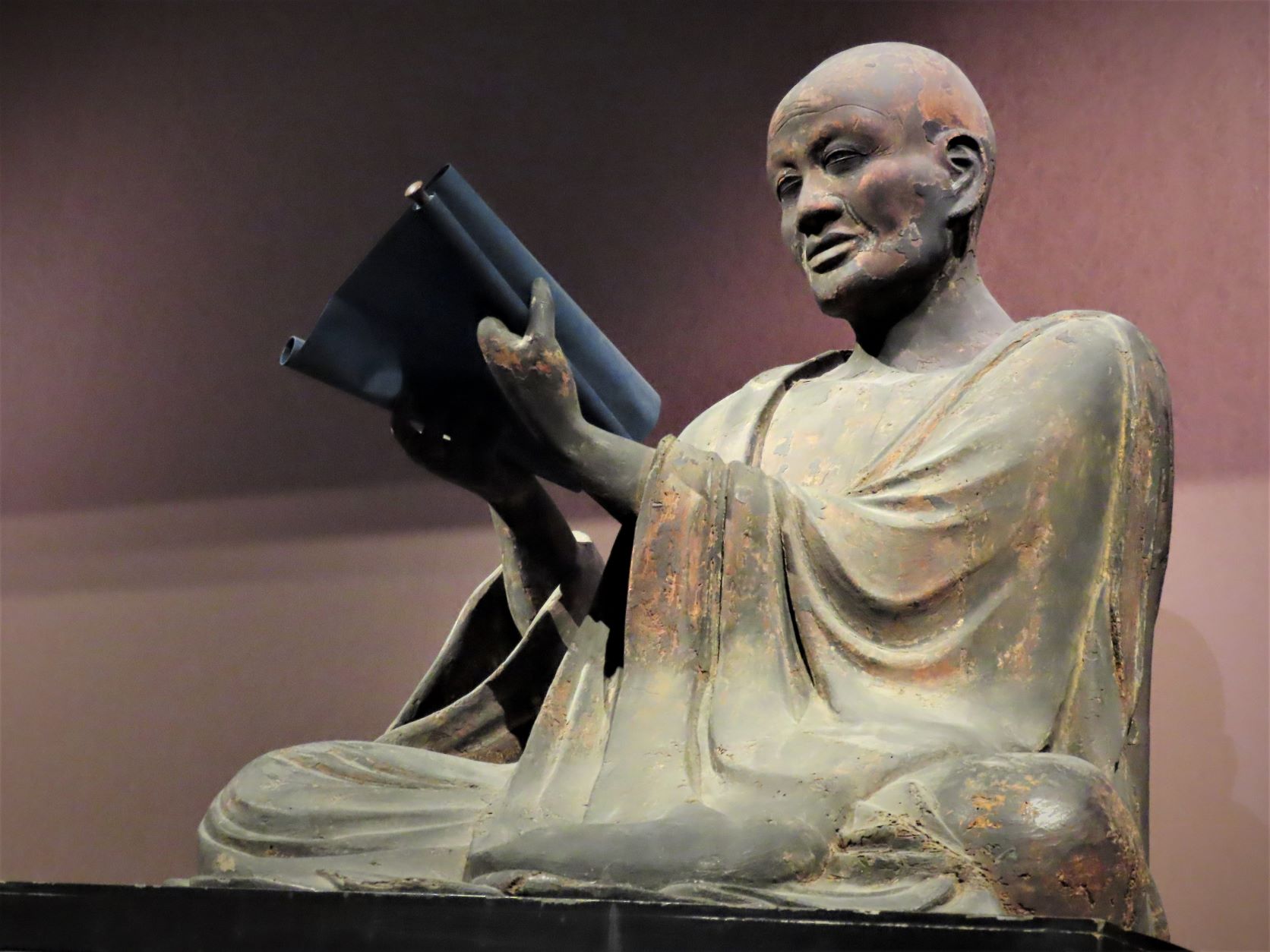
"Denbei Kiyomori sitting statue" (Kamakura period, 13th century)
Rokuharamitsuji Temple was located outside Heiankyo at that time, and is the entrance to Toribeno, the place of funeral procession in Kyoto. For this reason, it is a special place that has been regarded as the boundary between "that world" and "this world", but Rokuharamitsuji has been hit by many disasters and wars since its construction.
What is exhibited in this exhibition are miraculous items that have been passed down to the present day after overcoming those disasters. It may be good to think not only of its artistic value but also of the depth of faith at that time through the work.
The sitting statue of Taira no Kiyomori is believed to have been created by a Buddhist priest of the Kei school, and although there is no evidence, it is said to be a statue of Taira no Kiyomori. It is a mysterious statue.
Kiyomori sits in the form of a shaved monk, holding a scroll in both hands and crossing his legs as if looking at it. According to one theory, it was made to prevent Kiyomori's grudges, but while looking at the books, a meditative expression is impressive. What was Kiyomori, who once enjoyed the world, thinking at this time?
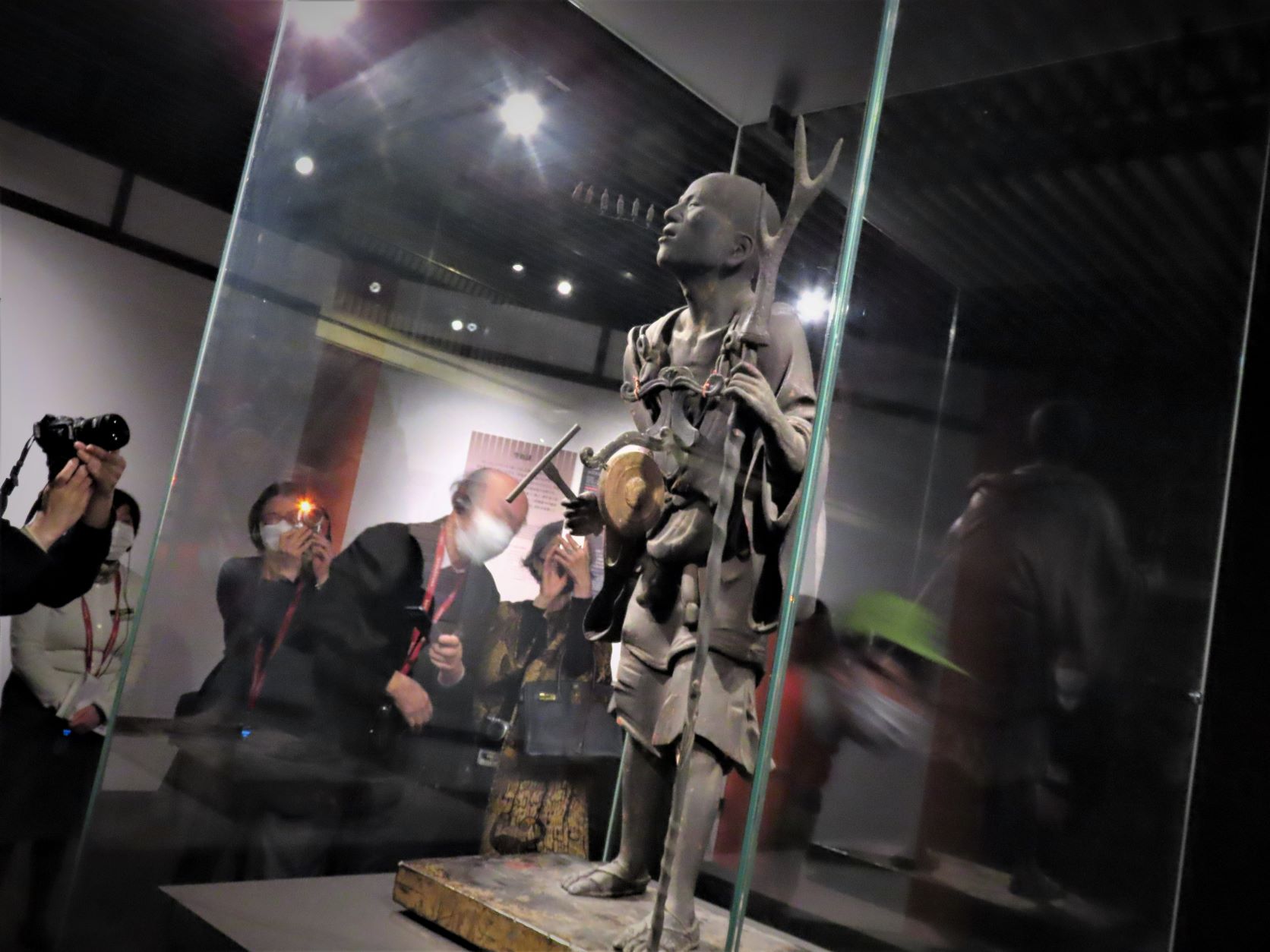
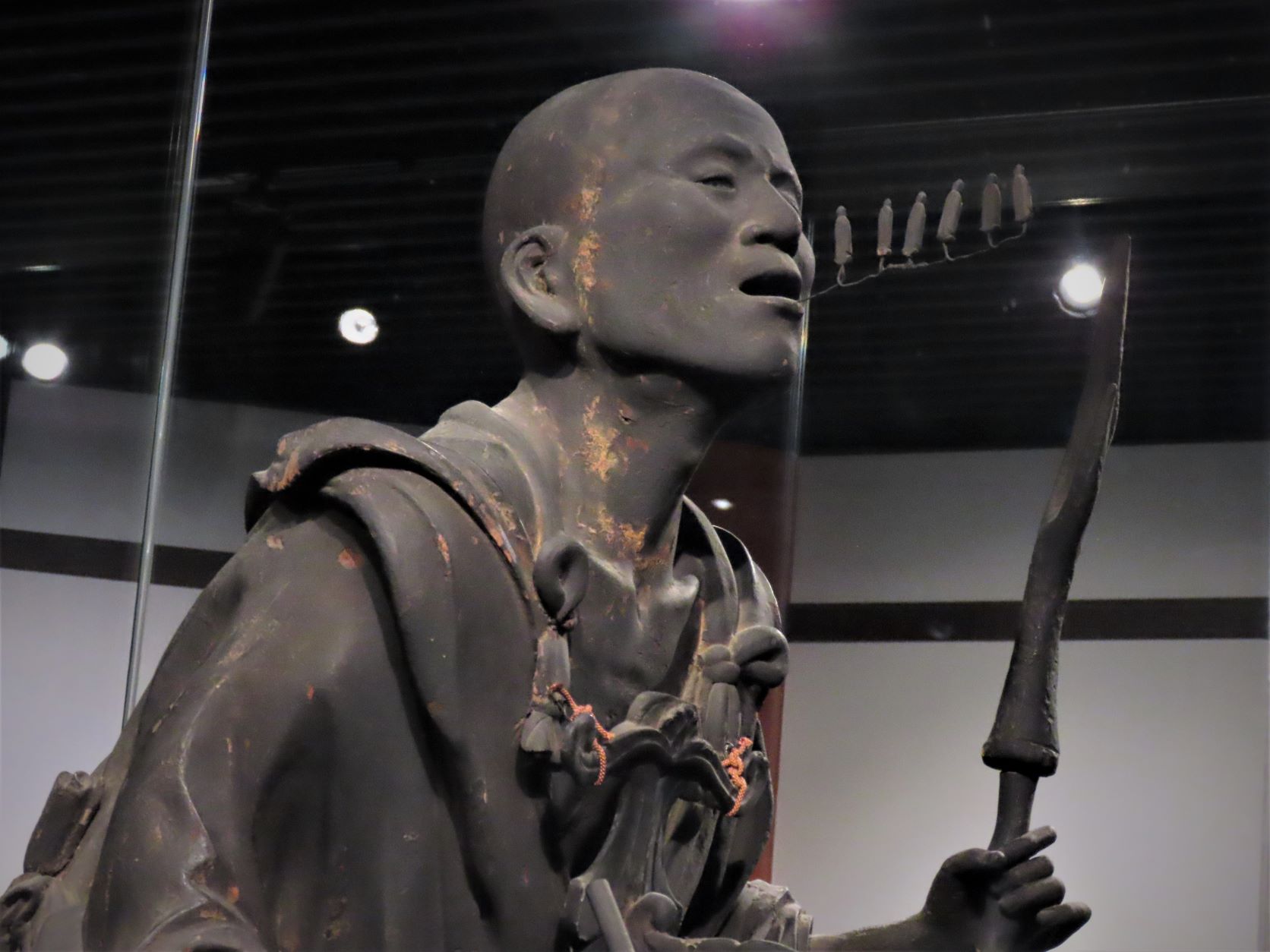
The statue of Kuya Kamito , owned by Rokuharamitsuji Temple, made in the early 13th century is one of the most famous portrait sculptures in Japan.
It is a work that is well known to the younger generation who do not know the achievements of Kuya Shonin and the official name of this statue because the unique modeling that the Buddha appears from the mouth is eye-catching.
The author is believed to be Kosho, the fourth son of Unkei, a Buddhist priest who represents the Kamakura period. It is said that this statue was created about 250 years after the death of Kuya, but it is characterized by its realism as if it had been created by witnessing him. The figure of a slim priest who beats a shoko, chanting a Buddhist priest, and walks while sticking a deer wand. The creativity that shaped the intangible voice is nothing but a hat.
This exhibition can be viewed from 360 ° in all directions. The shins and calves trained by walking around the city, the expression as if listening to the voice asking for help … I would like you to appreciate the work while remembering the appearance of Kuya's superiors. ..
Mihotoke, a laughing entertainer, is here! Click here for the press release report
Outline of the event
| Legislative session | March 1st (Tuesday) -May 8th (Sunday), 2022 |
| venue | Tokyo National Museum Main Building Special 5 Rooms |
| Opening hours | 9: 30-17: 00 |
| closing day | Monday, 3/22 * However, 3/21, 3/28, 5/2 are open |
| Organizer | Tokyo National Museum, Rokuharamitsuji Temple, Asahi Shimbun, TV Asahi, BS Asahi |
| Exhibition official website | https://kuya-rokuhara.exhibit.jp/ |


